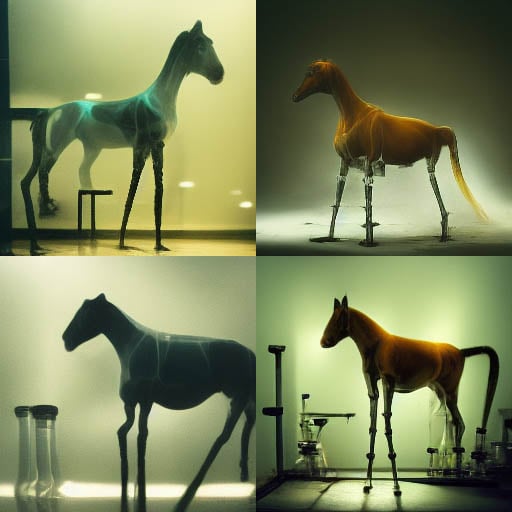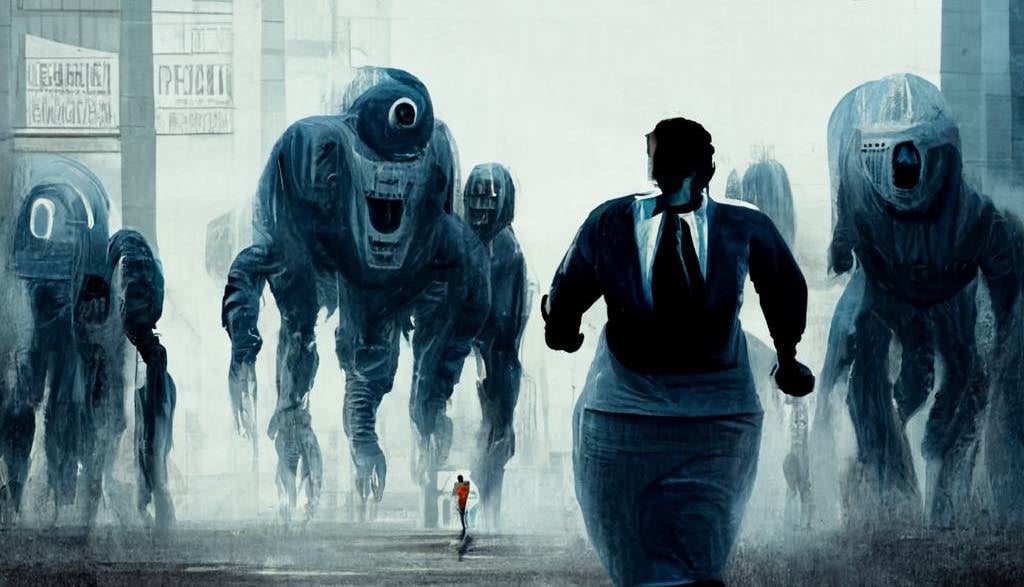Did you hear it? Like an audible Mexican wave, a collective gasp from the global creative community recently sweeping cities, towns and garden offices. AI image generation came of age. But what is it? And what does it mean for you?
The question isn’t actually ‘what is it?’
It should be, ‘what is it at this moment?’ Oct 31, 2022. 11.24am — For as we speak, it is evolving, learning, improving.
Today it has the capability to disrupt many services by democratizing access to unique, tailored imagery — approaching photographic quality (if that’s your need). It is wonderful at abstract beauty. With some expertise, it can present a raft of visual concepts in the style of your choosing in mere minutes. It’s actually breathtaking.
Yesterday it couldn’t make a passable human face.
Tomorrow, and I mean possibly tomorrow, it might have solved hands and be on to vectors and moving image. Scrap that. It will.
As a creative director I’m in a state of shock and awe. Like many a creative mind, mine is simply racing. The possibilities?! These, I’ll return to. Let’s first tackle practicalities.
The tools
There are several emerging tools. Some will become virtual household names, like Adobe’s Photoshop. Shorthand for ‘wow’ rather than wart removal.
Two of the leaders are MidJourney and Dall-e.
My journey began with the latter. Dall-e is masterful at some things. But while engaging with it is somewhat easier, I have found it limiting in comparison to MidJourney for origination. Both will give you images in reasonable resolution, based on ‘natural language’ instructions. Both give you a choice and the ability to vary each before downloading your preference in average screen size resolution.

This is an example of an image created by MidJourney using the keyword phrase: ‘Imagine a one-legged horse standing in a lab.’
The main differences are the control you have over the initial image in MidJourney currently appears greater. While Dall-e offers excellent tools to extend and edit images you make with it (or you upload). Together, and there’s nothing preventing the use of both, they equip creatives with the ability to originate, edit and grow a picture of almost anything.
The limitations I will touch on, now, but again let's note that these are being chipped away at, rapidly.
- Resolution, possibly only limited by computing power, is about 2,000px. Although Dall-e’s ability to ‘extend’ also grows resolution and there are other online AI tools which enable effective pixel enlargement.
- Multiple objects and scenes featuring several defined elements can be harder to achieve without compositing.
- They’re not good at everything yet, including the aforementioned hands, and text rendering.
- And retouching will often be needed.
Other limitations exist, but this blog isn’t a critique, it’s a breathless celebration.
Let’s talk about applications.
You may recognize this AI image created by my colleague Dr. Robert England for his recent blog.
What does it mean to you?
Your world, if it hasn’t already, will soon meet with AI generated images.
An average image will look incredible. A good one will be unrecognizable from a high-value piece of digital artistry or even photography. So learning to apply these tools in distinct ways that support your needs is as important as any exercise in branding.
Here are just a few possibilities:
1. Stock imagery - especially abstract or illustrative
Sigh at the prospect of searching the same old stock sites? Life is about to change. Make superb images you know are unique but also match brand hues, lighting, composition and illustrative style. ‘Good enough’ can be ‘Great by default’. Ideal for brochures, white papers and most other document types.
2. Editorial images for SoMe and content
Quickly create illustrative or abstract, photographic or iconographic imagery for social media channels that are closely tailored to the subject matter of your landing page content or blog post, enhancing storytelling and emotional relevance. Go further by creating variations to use on the post itself.
3. Campaign imagery
Craft consistent advertising using imagery that speaks directly to the message and audience without the budgets required to commission photography, graphic art or illustrations.
4. Internal communications imagery
Bring wow and engagement to internal comms, often reliant on tired images, clipart and icons. Think big and watch those messages land with impact.
Coming soon
Shortly, the limitations I mentioned above will evaporate. These tools will go much further, and offer creatives and their clients an ever-widening range of possibilities. Follow the UP blog for more in this series on AI and its impact on the future of communication in Life Science and across our focus areas.
As with every disruptive technology the law can lag — but isn’t usually far behind. Future blogs will follow on the topic. For now, good practice is to tread carefully by ensuring the originality of images generated. In particular, avoid referencing specific brands, artists and photographers, especially anything in copyright, in your creations.
